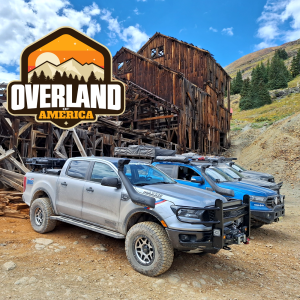Yes, hydraulic drive for wheels/axles has been being tested for 20 years if not more, there are a few problems in "real world" daily driver applications.
And they still need a mobile power source, i.e. an internal combustion engine or battery.
With a battery a conversion to hydraulic wouldn't make sense, electric motor drive would be more efficient.
Internal combustion power converted to hydraulic would mean you could run engine at it's most efficient RPM to maintain hydraulic pressure and even shut engine off when pressure is high enough.
The numbers I have seen were 5,000psi in the pressure tank to do a hydraulic drive, and at high temperature for best performance, so waste heat from the engine could be used to heat the hydraulic fluid, hotter the better for more pressure, that is a plus.
But in the real world a 5,000psi pressure tank with very hot fluid inside would be quite a hazard even in a small fender bender with all 4 wheels having a high pressure hose that could be broken.
Be a hard sell to the general public IMO, and not sure it would be a lot more efficient if it has the same performance as a direct drive internal combustion engine car.
If it was slow and sluggish it would get much better mileage, but so would a direct drive, lol.
My lean towards thermoelectric energy recovery is because we already have the heat and are getting rid of it, so wasted energy.
Internal combustion engines need to operate in a specific temperature range to be efficient, below or above that temperature means wasted money.
We now throw a minimum of 60% of our fuel energy out to heat the air.
Remember Dad saying "Close the God Damn door I am NOT paying to heat the whole damn neighborhood!", lol.
Well that is what we are doing each time we drive.
If you pay $4/gallon for fuel, $2.40 of that is "to heat the whole damn neighborhood!"
And not even a thank you
So any heat we can recover in the form of useable electric power is a plus, even if it's only 10% that's $.40/gallon in your pocket.
And they still need a mobile power source, i.e. an internal combustion engine or battery.
With a battery a conversion to hydraulic wouldn't make sense, electric motor drive would be more efficient.
Internal combustion power converted to hydraulic would mean you could run engine at it's most efficient RPM to maintain hydraulic pressure and even shut engine off when pressure is high enough.
The numbers I have seen were 5,000psi in the pressure tank to do a hydraulic drive, and at high temperature for best performance, so waste heat from the engine could be used to heat the hydraulic fluid, hotter the better for more pressure, that is a plus.
But in the real world a 5,000psi pressure tank with very hot fluid inside would be quite a hazard even in a small fender bender with all 4 wheels having a high pressure hose that could be broken.
Be a hard sell to the general public IMO, and not sure it would be a lot more efficient if it has the same performance as a direct drive internal combustion engine car.
If it was slow and sluggish it would get much better mileage, but so would a direct drive, lol.
My lean towards thermoelectric energy recovery is because we already have the heat and are getting rid of it, so wasted energy.
Internal combustion engines need to operate in a specific temperature range to be efficient, below or above that temperature means wasted money.
We now throw a minimum of 60% of our fuel energy out to heat the air.
Remember Dad saying "Close the God Damn door I am NOT paying to heat the whole damn neighborhood!", lol.
Well that is what we are doing each time we drive.
If you pay $4/gallon for fuel, $2.40 of that is "to heat the whole damn neighborhood!"
And not even a thank you
So any heat we can recover in the form of useable electric power is a plus, even if it's only 10% that's $.40/gallon in your pocket.













